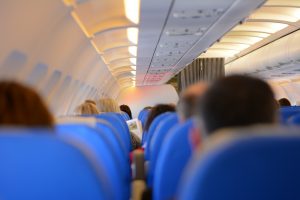2017 was a rough year for the airline industry, and 2018 isn’t shaping up to be much better. Already this year, United Airlines shocked the nation when one of its flight attendants caused the death of a passenger’s dog by putting it in an overhead compartment, which the company says is against its regulations. Less than a week later, the same airline accidentally sent a Kansas-bound dog to Japan, leading United to temporarily suspend its pet cargo program so that it can review policies that have led to such disasters. In the meantime, confidence in the airline industry has taken a significant hit.
Although United has faced the most criticism over the past year, it’s not alone. More recently, the family of a Kansas man has sued Southwest Airlines, alleging that he was thrown against a cabin wall on a flight last year after his seat belt came undone. Eugene Dreyer, 81, a stockbroker and financial adviser, had lost the use of his legs due to polio and was in a wheelchair when he and his wife boarded a Fort Lauderdale-bound Southwest flight in Kansas City on Feb. 21, 2017, according to the lawsuit. Dreyer was wheeled onto the plane by a Southwest employee and seated in the first row. Before take-off, Dreyer asked for a seat belt extension, and a flight attendant buckled him in using the seat belt and extension.Neither Dreyer, his wife, or an assistant traveling with them touched or adjusted the belt during the flight, the lawsuit says.
When the plane began to decelerate, the belt failed to restrain him and he flew forward into the bulkhead wall. The lawsuit claims that he sustained severe injuries to his head, shoulder, foot, and leg, including a broken femur. His family claims that he suffered loss of cognitive functions and severe depression, and that the injuries he sustained on the flight led to his death on April 23, 2017. The suit was filed on behalf of Dreyer’s wife and two children and seeks an unspecified amount in damages. Southwest Airlines has declined to comment on the lawsuit, stating that it would be unwise to do so “ahead of the legal process.”
 While airplane crashes make receive national media attention, many less serious accidents go unreported. Thousands of passengers are injured on commercial airlines every year. While some of these may be the result of an unforeseeable accident, some injuries are the result of the airline’s negligence.
While airplane crashes make receive national media attention, many less serious accidents go unreported. Thousands of passengers are injured on commercial airlines every year. While some of these may be the result of an unforeseeable accident, some injuries are the result of the airline’s negligence.  Georgia Injury Lawyers Blog
Georgia Injury Lawyers Blog


 A woman has
A woman has  Most of us are pretty excited to board a plane, especially when you’re flying to a vacation destination. Even when traveling for work, flying to another location often brings a welcome change of scenery. For some of us, however, flying brings some nervousness and anxiety – it’s hard not to worry about a plane crash or some other serious incident. That said, we tend to forget about the run-of-the-mill accidents that can happen while flying. Even though these aren’t as scary as a plane crash, these accidents can lead to serious injuries. If you do get injured while flying, the airline may be responsible for your medical bills and other losses, so it’s important to speak to an attorney after you’re injured on an airplane.
Most of us are pretty excited to board a plane, especially when you’re flying to a vacation destination. Even when traveling for work, flying to another location often brings a welcome change of scenery. For some of us, however, flying brings some nervousness and anxiety – it’s hard not to worry about a plane crash or some other serious incident. That said, we tend to forget about the run-of-the-mill accidents that can happen while flying. Even though these aren’t as scary as a plane crash, these accidents can lead to serious injuries. If you do get injured while flying, the airline may be responsible for your medical bills and other losses, so it’s important to speak to an attorney after you’re injured on an airplane.